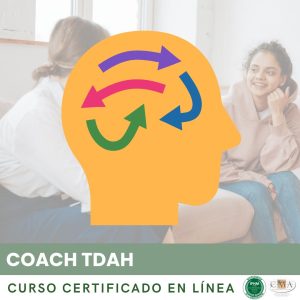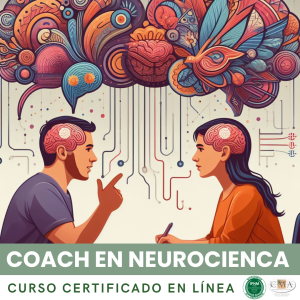
Creativity and lateral thinking exercises are valuable tools in the Ikigai Coach’s toolkit, allowing them to stimulate the client’s imagination, innovation, and mental flexibility in the realization of their Ikigai. Indeed, the quest for an aligned and fulfilled life is not limited to a linear and rational approach, but calls on the ability to think outside the box, to consider new possibilities, and to create original solutions. The Ikigai Coach must therefore be able to propose fun and inspiring exercises to help the client unleash their creative potential and to face challenges with a renewed perspective.
Among the indispensable creativity exercises, we find brainstorming, already mentioned in the previous sub-module on problem-solving. But beyond its use to generate solutions, brainstorming can also be used more broadly to stimulate divergent thinking and explore new avenues. The Ikigai Coach can suggest thematic brainstorming sessions, inviting the client to generate as many ideas as possible on a specific aspect of their Ikigai, such as “100 ways to live out my passion for writing” or “50 inspiring people I could contact to develop my project”. These “exploratory” brainstorming sessions allow to widen the field of possibilities, to make unexpected connections, and to nourish the client’s motivation and enthusiasm.
Mind mapping, or heuristic chart, is another powerful tool to stimulate creativity and visually organize one’s ideas. It involves creating a branching graphic representation, starting from a central theme and associating it with branches and sub-branches of keywords, images, and symbols. The Ikigai Coach can invite the client to create a mental map of their Ikigai, exploring the different facets of their raison d’être(passions, talents, values, contribution) and linking them in an intuitive and colorful way. This global and organic visualization enables to make new connections, identify areas to explore, and communicate one’s Ikigai in a lively and memorable way.
Lateral thinking exercises, a concept developed by Edward de Bono, aim to break away from habitual thought patterns to approach situations from a new angle. This involves “thinking outside of the box”, using techniques such as provocation, inversion, or analogy. For example, the Ikigai Coach may propose a “devil’s advocate” exercise to the client, asking them to defend a position opposite to their Ikigai, such as “Why my Ikigai is a bad idea” or “Why I should not realize my dream”. By voluntarily exploring the opposite of their convictions, the client can become aware of their unconscious brakes, anticipate objections, and strengthen their argumentation.
Role-playing games, already addressed in a previous sub-module, can also be used creatively to explore different facets of one’s Ikigai. The Ikigai Coach can suggest the client to take on the role of an inspiring character, real or fictitious, and to imagine how they would live their Ikigai. For example, “If you were Oprah Winfrey / Gandhi / Mother Teresa, how would you embody your Ikigai in everyday life?” or “If you were the hero/heroine of your favorite book, how would you face the challenges on your Ikigai path?”. These “inspiring” role-playing games allow to connect with stimulating models, broaden one’s vision, and draw on new resources.
Creative visualization exercises are another family of tools to stimulate imagination and intuition in the realization of one’s Ikigai. It involves guiding the client in an immersive and multisensory experience, inviting them to project themselves into a desirable future or to explore an aspect of their Ikigai in a symbolic way. For example, the Ikigai Coach can propose a visualization of the “future diary”, by having the client imagine opening their intimate diary in 5 or 10 years, and describing in detail their ideal life in line with their Ikigai. This concrete and embodied projection helps to clarify their vision, reinforce their motivation, and identify the key steps to achieve their objective.
Beyond specific exercises, the Ikigai Coach can also encourage the client to cultivate a creative and playful attitude daily, inviting them to experiment with new activities, to step out of their comfort zone, and to marvel at the little things. They can propose them to keep an “idea notebook” to write down their inspirations, dreams, and projects, or to regularly practice an artistic activity (drawing, singing, dancing…) to feed their creativity. The key is to develop their “creative muscle”, their ability to see the world with new eyes and to turn constraints into opportunities.
By integrating creativity and lateral thinking exercises into their support, the Ikigai Coach provides the client with a space for exploration and experimentation, conducive to the emergence of new perspectives and the unleashing of their creative potential. They assist them to develop their mental flexibility, their audacity, and their ability to innovate, key skills for flourishing in a constantly evolving world. By cultivating a relationship of complicity and co-creation, the Ikigai Coach and the client can approach the quest of Ikigai as a large playground, where everything is possible to invent a singular and exciting life full of meaning.
Key Takeaways:
– Creativity and lateral thinking exercises are valuable tools for the Ikigai Coach, helping to stimulate the client’s imagination, innovation, and mental flexibility in the realization of their Ikigai.
– Brainstorming can be used in an exploratory manner to generate ideas on a specific aspect of Ikigai and widen the range of possibilities.
– Mind mapping provides a way to create a visual, branching representation of Ikigai, yielding new connections and a comprehensive vision.
– Lateral thinking exercises, like the “devil’s advocate,” encourage breaking away from habitual thinking patterns to approach situations from a fresh perspective.
– Inspiring role-playing games, through adopting the roles of inspiring characters, allow for an expanded vision and access to new resources.
– Creative visualization exercises, like the “future diary”, aid in clarifying vision, bolstering motivation, and identifying key steps.
– Ikigai Coaches encourage clients to cultivate daily creativity, maintaining an “idea notebook” and engaging in artistic activities.
– By including these exercises, Ikigai Coaches provide a space for exploration and experimentation, fostering the emergence of new perspectives and the unleashing of the client’s creative potential.
👉 To download docx (Editable) file click here : Click here
👉 To download PDF file click here : Click here
👉 To download MP3 file click here : Click here




